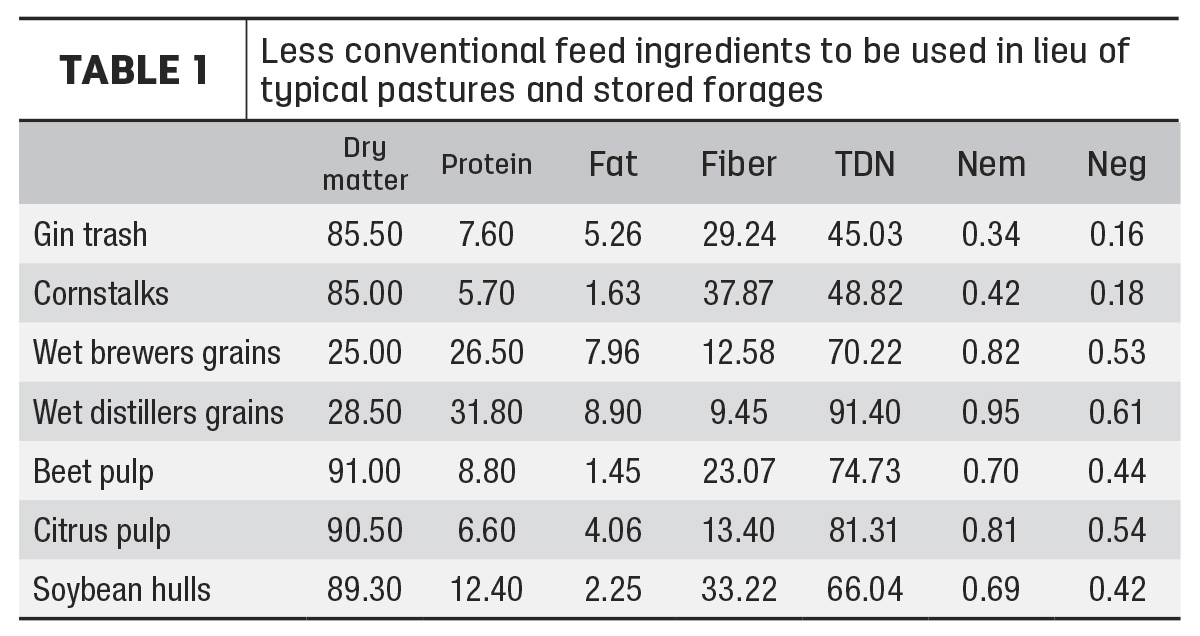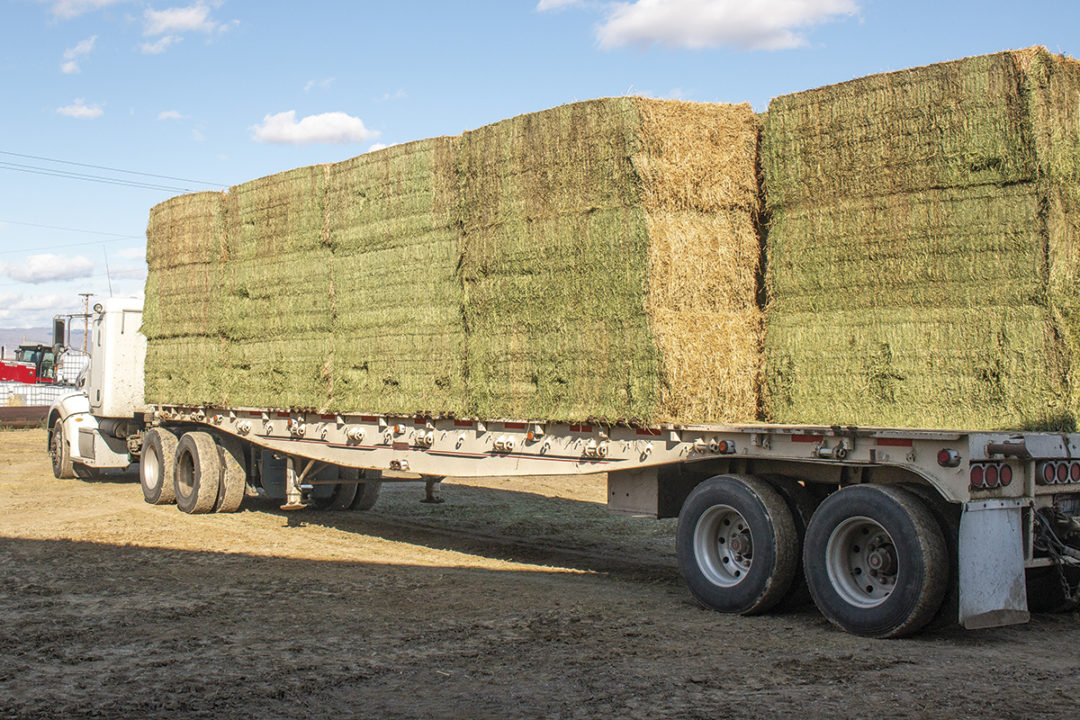Every cattle operation has its own feeding and nutrition program. It’s the single-largest ongoing production expense and the one that may require the greatest amount of time, focus and planning to manage. It may also be the most variable, depending on the region and operations themselves. However, the similarity that all operations share is that feeding and nutrition are critical to success and can be very sensitive to supply issues.
Even before we took a structured approach to provide feed and forage supplies for the cattle we manage, ensuring adequate, consistent availability of nutrients has been a challenge. Recent (and ongoing) events and subsequent experiences have highlighted this issue. Droughts and other weather events, excessive costs of fuel and fertilizer, labor shortages, supply chain issues, government policy idiosyncrasies, etc. – all contribute to a production environment that makes it imperative to aggressively plan an approach to providing for forage and feed supplies.
Causes for feed and forage shortages
As noted above, there are numerous reasons for feed shortages. Let’s be clear when we are discussing “feed” shortages: This refers to either forage (pasture, hay, silage) or actual mixed feeds and supplements.
Shortages of forage supplies
The most common cause of forage shortages is drought or other adverse weather conditions that could delay either planting or harvest, not just actual plant growth. Most regions of the country have dealt with all these issues in some manner or another. While it is never pleasant, many producers have become well-versed in drought management.
The first assumption most producers make is to buy whatever hay they can find in their local area. Two potential problems often encountered are cost and quality. As local hay production gets short, prices increase quickly and dramatically. Secondly, in many cases, the hay being sold is not the best (many producers who have extra hay keep the best for their own use). In many cases, whatever forage that can be cut and baled is being sold. This can be loaded with weeds and/or a lot of brush, thorny vines, etc. A lot of last year’s (or even older) hay is sold. This may not be that much of a problem, especially if it has been stored under cover, but certain nutrients, such as vitamins, will have deteriorated. Be careful when buying hay.
Other forages are often baled and sold. These can work, but you have to realize what you are buying. Fiber sources, such as corn or milo stalks, are not bad forage sources. However, because they can be coarse (stalks), cows may not consume them the best. In more Southern areas, a lot of rice straw is sold. I generally discourage feeding rice straw because it is not very digestible, and a cow can actually use more energy digesting rice straw than she will get from it. Plus, rice straw can be high in silica, which can be abrasive to the teeth. Yet another source often used is cotton gin trash (cotton burrs). Gin trash is a byproduct from the ginning of cotton and is made up of dried cotton plant leaves, small stems, lint and, in many cases, some seed. Cows can adapt to eating gin trash, but it is better fed in a mix with other ingredients. Plus, it has to be bought and handled in bulk.
There are a wide variety of other fiber and nutrient sources that can be utilized when forages become short. The challenging part of this for many producers is being able to feed and handle materials, since some of them, such as gin trash, are only available in bulk. Secondly, in many cases, to be properly fed and allow for good consumption, these products need to be mixed with other ingredients. Cattle will eat a wide variety of fibers and byproducts that no other species will and are able to extract useful nutrients. This allows for any number of somewhat less conventional feed ingredients to be used in lieu of typical pastures and stored forages. Table 1 shows some of these. This is only a small sampling of the numerous byproduct choices that can be used in cows and growing cattle. A great deal of what is available is dependent on your location. It pays to do the research well in advance of a problem developing so there is an awareness of the options.

Shortages of feed supplies
Feed shortages can occur for many of the same reasons forage shortages do. A great deal of feed and grain shortages can occur due to crop deficiencies (planting, harvest or poor growth conditions). In many cases, these are not so much shortages as they are high prices due to either supply or demand. Demand can increase dramatically, especially when there are global shortages and U.S. export policy allows for exceptional sales of various grains and feed ingredients to other countries. Despite tense political relationships, China continues to be an aggressive buyer of U.S. grain stocks, which decreases domestic supplies and drives up market prices.
Other conditions are related to fuel costs and transportation issues. Truck drivers continue to be in short supply, and trucking loads of grain or feed from place to place can be met with continued delays. Similar conditions are found on the railroads as well. Shipping times are commonly delayed to points of sale or manufacture.
This has not only been true with common grains, such as corn and soybean meal. Shortages have been seen (and continue in some situations) in a wide variety of feed ingredients, such as cottonseed meal, soy hulls and canola meal. Because of the variety of factors affecting supplies, shortages can develop without a lot of advance notice.
The greatest net result is increased prices, which do not show a lot of signs of weakening.
So what is the answer?
Unfortunately, there are not a lot of good answers, since so many of the factors mentioned are out of our control. But there are some things to be done:
- Manage and plan forage production with the thought of producing carryover. If production conditions are good, plan on producing some surplus for the future. If your carryover is less than desired, make forage purchases sooner rather than later. If you wait, remember that other producers may realize supplies are short as well and will also start buying, reducing available supplies and driving up prices.
- Look at local and farther-removed suppliers. In most cases, when one area has drought conditions, other regions not too far away may have adequate moisture and forage supplies. Work on developing an assortment of suppliers so there are options. Remember, however, that when longer distances come into play, transportation costs can become more significant, and transportation can also become harder to arrange. As with suppliers, research trucking companies or truck brokers who can help with transportation at a reasonable cost. Trucking can be “shopped” – just like the product you need to move.
- Research your area feed and ingredient suppliers. Often, producers get into a rut of buying from only one store or mill. Familiarize yourself with the different feed companies that service your area. Also, become familiar with their products. Consider all your options from the large feed companies and mills down to the smaller, one-man operations. In many cases, the smaller guys can work with you more closely and mix something specific for you at lower volumes than the big companies will.
- Consider your storage and buying in bulk if you have not previously. While an upright grain bin or a commodity shed is optimal, something as simple as a concrete slab with a tarp thrown over the feed or grain supply can work temporarily for storage. Ideally, however, a structure with a good roof to keep the feed dry is ideal.
- Talk with family or neighbors who have programs at least somewhat similar to yours. There is strength in numbers, and by coordinating forage or feed purchases, the increased volumes can help improve the economics of your purchases.
- Work with a nutritionist. A feed company or independent nutritionist can be very helpful in planning and strategizing your long-term feeding program. They can also provide advice on different options and feeding techniques. Feed company nutritionists can provide this service in exchange for purchasing their company’s product. Independent nutritionists will charge a consulting fee or may sell a mineral/vitamin pack to pay for their service.
- Talk with your local USDA/FSA office. Determine what programs they may have available that can subsidize your expense, especially in adverse weather conditions.
- More than anything, research and plan ahead. Waiting until the last minute is never good and can be very expensive.
Feed and forage shortages are always a challenge and never fun. But they do not have to shut down your operation. You purchase insurance for a variety of risks you face daily. Doing your research and planning for these conditions is part of the insurance covering your operation and can greatly improve the handling of the “what ifs” we commonly face in agriculture and cattle production.








